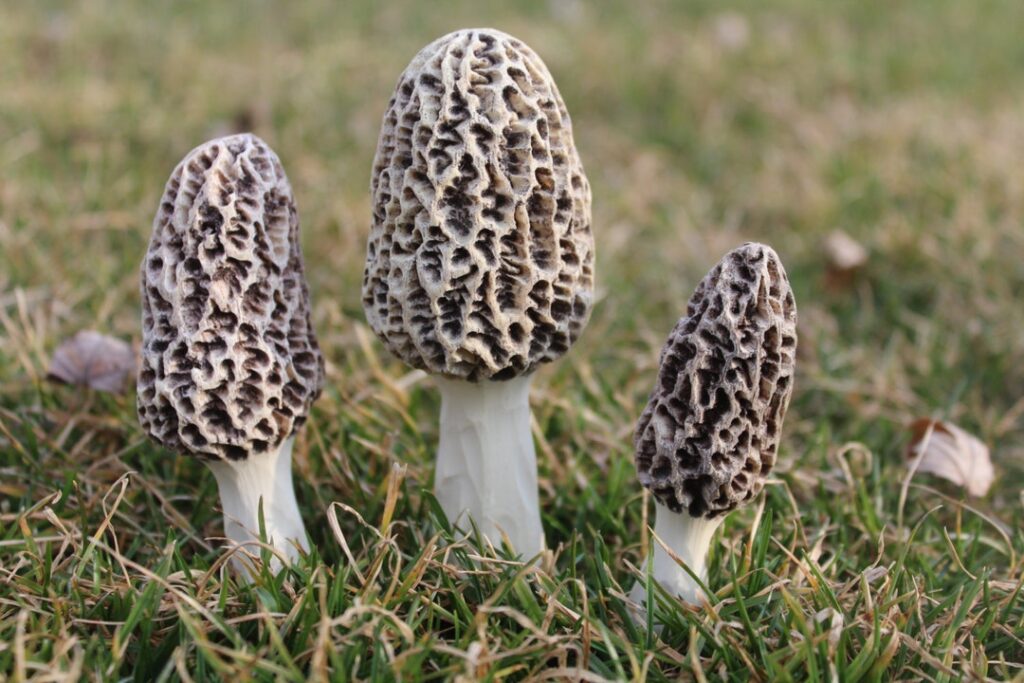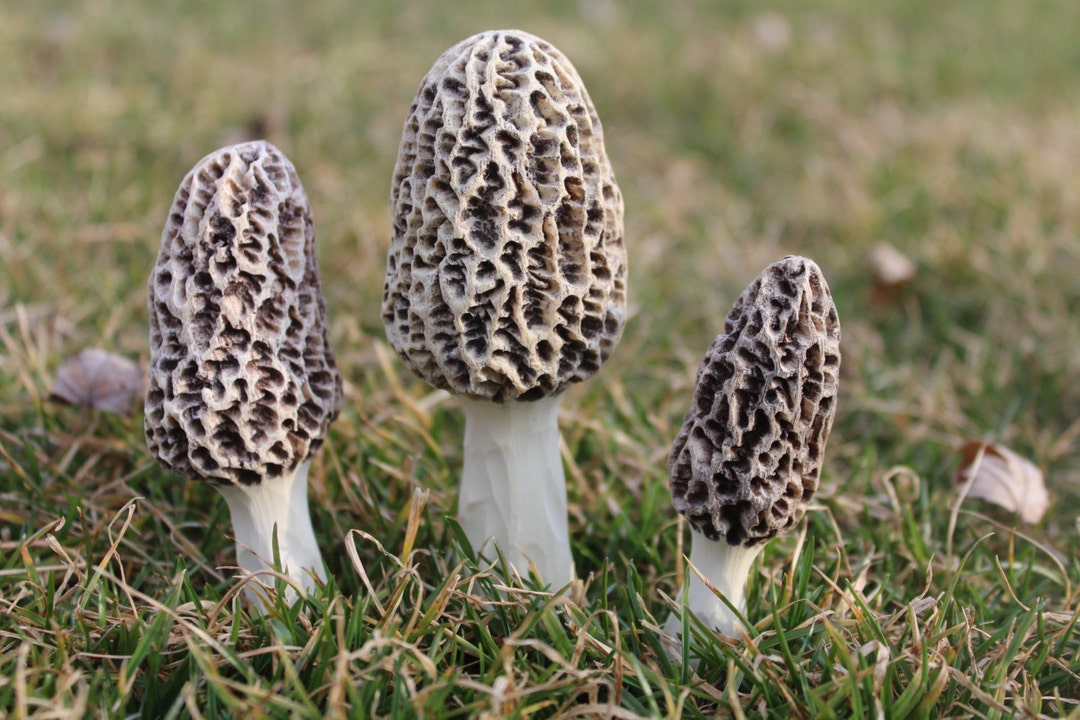
Unearthing the Elusive Landscape Morel: A Comprehensive Guide
The landscape morel, a prized edible fungus, presents a unique challenge and reward for mushroom hunters. Unlike their forest-dwelling cousins, landscape morels, often *Morchella rufobrunnea*, thrive in disturbed urban environments, particularly in wood chips, landscaped areas, and even along roadsides. This guide aims to provide a comprehensive understanding of these fascinating fungi, covering identification, habitat, ethical foraging practices, and culinary uses. Whether you’re a seasoned mycophile or a curious beginner, understanding the nuances of the landscape morel can open up a new world of fungal discovery.
Identifying Landscape Morels: Distinguishing Features
Accurate identification is paramount when foraging for any mushroom, and the landscape morel is no exception. Several key characteristics distinguish it from other mushrooms, including potentially poisonous look-alikes.
- Cap Shape and Texture: Landscape morels typically have a conical or elongated cap with distinct pits and ridges resembling a honeycomb. The ridges are usually darker than the pits.
- Stem Attachment: The cap is fully attached to the stem, meaning there is no free-hanging edge. This is a crucial feature to differentiate it from false morels.
- Hollow Interior: A true morel, including the landscape morel, will have a completely hollow stem and cap when sliced lengthwise. This is a key diagnostic feature.
- Color: Landscape morels exhibit a range of colors, from yellowish-brown to dark brown, often darkening with age. *Morchella rufobrunnea* tends to have a reddish-brown hue, hence the name.
- Habitat: As the name suggests, landscape morels are frequently found in urban and suburban environments, particularly in areas with wood chip mulch, disturbed soil, and near landscaping features.
It is important to emphasize that this information should not be used as the sole basis for identification. Always consult with experienced mycologists or use reliable field guides before consuming any wild mushroom. Misidentification can lead to serious illness or even death. A thorough understanding of *landscape morel* characteristics is crucial for safe foraging.
Habitat and Ecology: Where to Find Landscape Morels
Understanding the ecological preferences of landscape morels is key to successful foraging. Unlike forest morels, which are often associated with specific tree species, landscape morels thrive in disturbed habitats. These fungi are saprophytic, meaning they obtain nutrients from decaying organic matter, primarily wood chips and other landscaping materials. The presence of landscape morels often indicates recent landscaping activity or soil disturbance.
Common locations to find landscape morels include:
- Wood Chip Beds: Flower beds, mulched areas around trees, and other landscaped areas are prime hunting grounds.
- Construction Sites: Recently disturbed soil and the presence of wood debris can create favorable conditions.
- Roadsides and Parks: Areas with landscaping or recent maintenance activities may harbor these fungi.
- Urban Gardens: Compost piles and mulched garden beds can provide a suitable environment.
The timing of landscape morel appearance is also crucial. They typically emerge in the spring, following periods of warm temperatures and rainfall. Local weather patterns and microclimates can influence the exact timing, so it’s important to monitor local mushroom hunting reports and online forums. Successful *landscape morel* foraging relies on understanding their unique habitat preferences.
Ethical Foraging Practices: Respecting the Environment
Foraging for wild mushrooms, including landscape morels, should be conducted responsibly and ethically. Sustainable harvesting practices ensure the long-term health of fungal populations and the environment. Here are some key ethical considerations:
- Identification: Absolutely and positively identify the mushroom before harvesting. When in doubt, throw it out.
- Permission: Always obtain permission from landowners before foraging on private property. Respect property boundaries and signage.
- Sustainable Harvesting: Avoid over-harvesting. Take only what you need and leave some mushrooms behind to allow for spore dispersal. Consider cutting the stem instead of pulling the entire mushroom to minimize disturbance to the mycelium.
- Habitat Protection: Minimize disturbance to the surrounding environment. Avoid trampling vegetation or disturbing the soil.
- Education: Share your knowledge with others and promote responsible foraging practices.
By adhering to these ethical guidelines, we can ensure that future generations can enjoy the bounty of wild mushrooms. Responsible *landscape morel* harvesting protects the fungal ecosystem.
Landscape Morel Look-Alikes: Avoiding Poisonous Mushrooms
The most critical aspect of mushroom foraging is avoiding poisonous look-alikes. Several mushrooms can resemble landscape morels, some of which are toxic and can cause serious illness or even death. The most common and concerning look-alikes are false morels (Gyromitra species).
Here’s how to differentiate between landscape morels and false morels:
- Cap Attachment: True morels have a cap that is fully attached to the stem, while false morels have a cap that is only partially attached, with a free-hanging edge.
- Hollow Interior: True morels have a completely hollow stem and cap when sliced lengthwise, while false morels have a stem that is chambered or filled with cottony tissue.
- Cap Shape: False morel caps are often irregularly shaped, brain-like, or saddle-shaped, unlike the honeycomb-like appearance of true morels.
- Color: While color can vary, false morels often have a reddish-brown or chestnut-brown color, which can be similar to some landscape morels.
Other potential look-alikes include stinkhorns (Phallus species) in their immature “egg” stage, but these are generally easily distinguishable due to their appearance and odor. Always be absolutely certain of your identification before consuming any wild mushroom. Using multiple identification resources, consulting with experienced foragers, and even seeking expert confirmation are all advisable. Incorrect identification of a *landscape morel* can have serious consequences.
Culinary Uses: Preparing and Cooking Landscape Morels
Landscape morels are highly prized for their unique flavor and texture. They have a nutty, earthy taste that is enhanced by proper preparation and cooking. Before cooking, it’s essential to clean the morels thoroughly to remove any dirt, insects, or debris. A common method is to soak them in saltwater for a few hours, which helps to dislodge any hidden critters.
Here are some popular ways to prepare and cook landscape morels:
- Sautéed: Sautéing morels in butter or olive oil is a classic and simple method. The mushrooms are cooked until tender and slightly browned, bringing out their rich flavor.
- Cream Sauce: Morels can be added to a cream sauce and served over pasta, chicken, or steak. The creamy sauce complements the earthy flavor of the mushrooms.
- Stuffed: Morels can be stuffed with a variety of fillings, such as breadcrumbs, herbs, and cheese, and then baked or grilled.
- Soup: Morels can be used to make a flavorful mushroom soup. They can be combined with other mushrooms, vegetables, and herbs for a hearty and delicious soup.
- Dried: Morels can be dried for later use. Dried morels can be rehydrated and used in soups, sauces, or other dishes.
It is crucial to cook morels thoroughly before consuming them, as raw morels can be toxic. Cooking breaks down the toxins and makes them safe to eat. Enjoying *landscape morel* culinary delights requires proper preparation.
The Future of Landscape Morel Foraging: Challenges and Opportunities
The growing interest in foraging and wild foods has led to increased pressure on mushroom populations, including landscape morels. As urban development continues, the habitats of these fungi are also being impacted. Sustainable foraging practices, habitat conservation, and public education are essential to ensure the long-term viability of landscape morel populations.
Furthermore, research into the cultivation of landscape morels could offer opportunities to reduce pressure on wild populations and make these prized mushrooms more accessible. While cultivating morels is challenging, ongoing research is exploring different cultivation techniques and strategies. Understanding the specific environmental conditions that promote landscape morel growth could lead to more successful cultivation methods.
The future of *landscape morel* foraging depends on responsible practices and innovative solutions. [See also: Cultivating Morel Mushrooms at Home]
Conclusion: Appreciating the Urban Morel
The landscape morel represents a fascinating example of a wild food source thriving in urban environments. By understanding their identification, habitat, ethical foraging practices, and culinary uses, we can appreciate these unique fungi and enjoy their culinary delights responsibly. As we continue to explore the world of wild mushrooms, it’s essential to prioritize sustainability and conservation to ensure that future generations can experience the joy of unearthing the elusive landscape morel. The *landscape morel* offers a unique foraging experience right in our own backyards.

